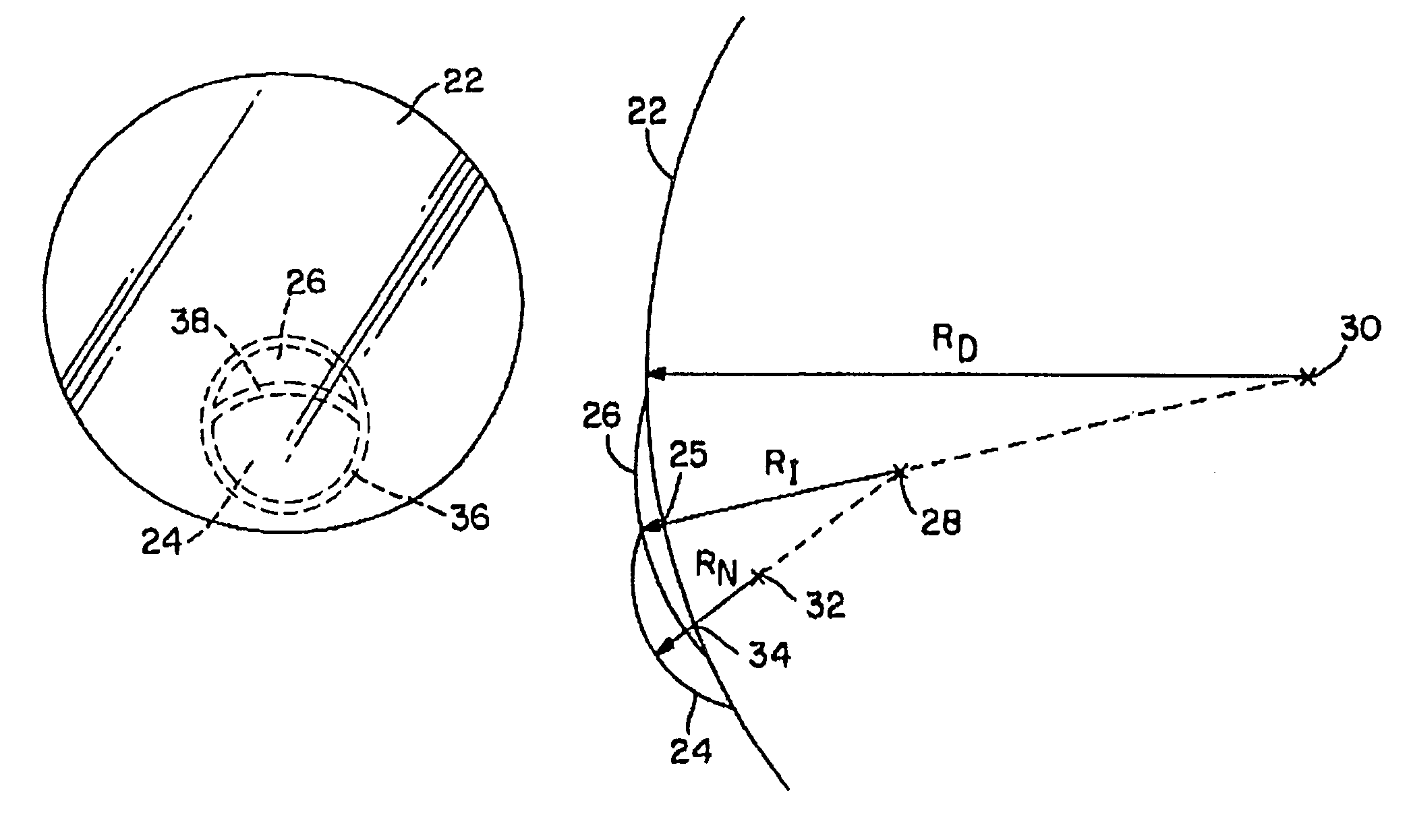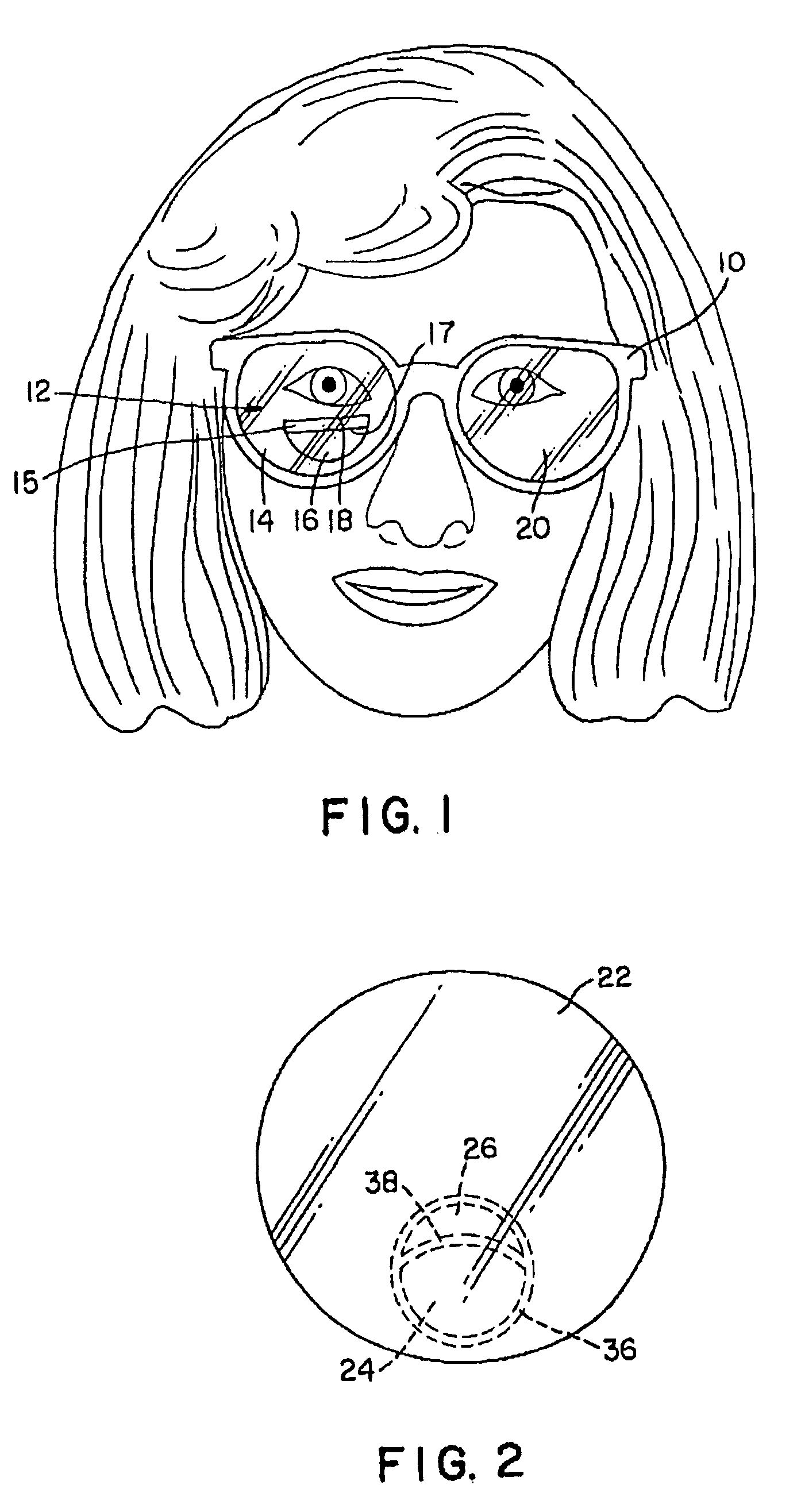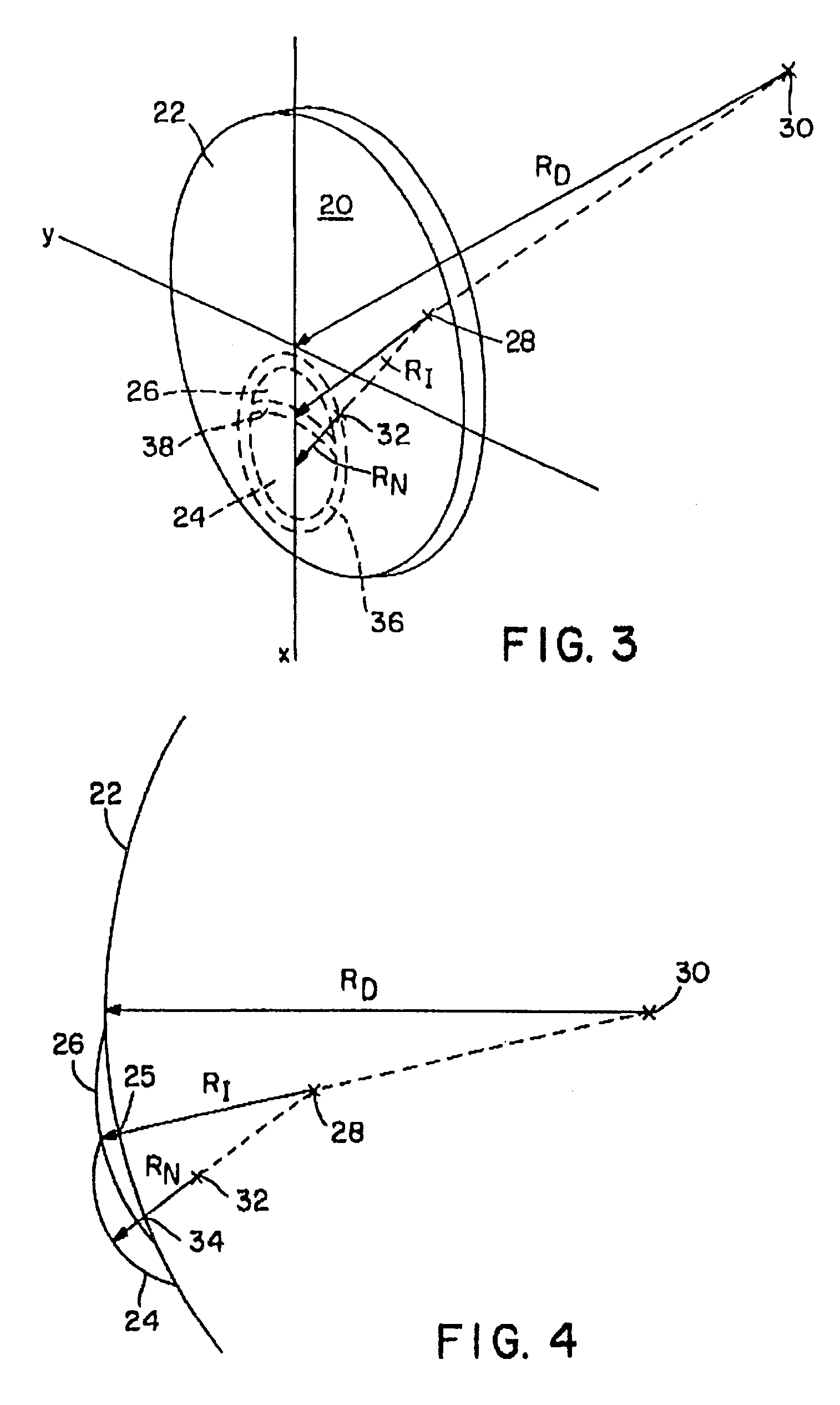Non-progressive trifocal ophthalmic lens
a trifocal ophthalmology and progressive technology, applied in the field of progressive, trifocal ophthalmology lenses, can solve the problems of inability to eliminate several unwanted effects of progressive lenses, and distortion of images, so as to avoid progressive transition blurring for wearers, improve optics, and eliminate visual distortion problems.
- Summary
- Abstract
- Description
- Claims
- Application Information
AI Technical Summary
Problems solved by technology
Method used
Image
Examples
Embodiment Construction
A preferred embodiment of the invention which is intended to accomplish at least some of the foregoing objects comprises a non-progressive, trifocal ophthalmic lens having three fields of vision without a perceptible external transition between the fields. The non-progressive aspect of the trifocal lens is achieved by blending narrow transition zones between the adjacent fields of vision. Further, unlike traditional trifocal lenses, the transition zones of the present invention are of uniform width, providing a smooth transition between the different optic fields that can not be easily discerned by a person observing a wearer of said ophthalmic lens.
THE DRAWINGS
Other objects and advantages of the present invention will become apparent from the following detailed description of preferred embodiments thereof, taken in conjunction with the accompanying drawings, wherein:
FIG. 1 is a portrait view of a person wearing trifocal glasses, wherein said glasses have a conventional trifocal len...
PUM
 Login to View More
Login to View More Abstract
Description
Claims
Application Information
 Login to View More
Login to View More - R&D
- Intellectual Property
- Life Sciences
- Materials
- Tech Scout
- Unparalleled Data Quality
- Higher Quality Content
- 60% Fewer Hallucinations
Browse by: Latest US Patents, China's latest patents, Technical Efficacy Thesaurus, Application Domain, Technology Topic, Popular Technical Reports.
© 2025 PatSnap. All rights reserved.Legal|Privacy policy|Modern Slavery Act Transparency Statement|Sitemap|About US| Contact US: help@patsnap.com



